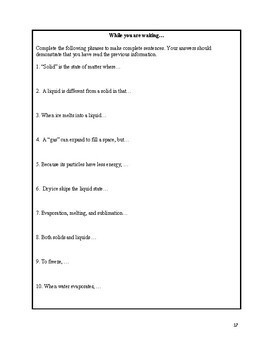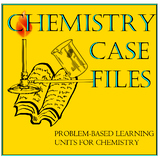The Boy and the Bottle - A "Properties of Matter" Unit (PBL)
- Zip
What educators are saying
Also included in
- This BUNDLE consists of a year's worth of Chemistry Problem-Based Learning Units. They are also sold separately on TPT.All of the units have two sets of files. The "Classroom" files should be used in an in-person classroom setting. The "Absent" files can be used for long-term distance learning, homePrice $76.10Original Price $85.80Save $9.70
Description
The Boy and the Bottle: A Problem-Based "Properties of Matter" Unit (PBL) for High School Chemistry
Summary:
A child is brought to the emergency room unconscious. The doctor is concerned that the child has been poisoned, possibly by the contents of his bottle. This problem-based unit asks students to complete a series of experiments to determine whether the boy’s bottle contains something besides water.
Both the classroom version and the distance learning/ absent version follow the outline below. In the distance learning option, the case is presented using readings, virtual simulations, and videos.
See the Preview for a list of lab materials, suggested timing, and the first day lesson.
This product is also part of a BUNDLE found here.
Objectives:
Differentiate between physical and chemical changes and properties;
Identify extensive and intensive properties;
Compare solids, liquids, and gases in terms of compressibility, structure, shape, and volume; and
Classify matter as pure substances or mixtures through investigation of their properties.
Components:
Day 1:
Introduction
Extrinsic and Intrinsic Properties - Notes and lab
Day 2:
Separating a Mixture Part I - Lab
Day 3:
States of Matter - Notes with on-line simulation
Properties of Matter WS - Practice
Day 4:
Separating a Mixture Part II - Lab
Day 5:
Separating a Mixture Part III - Lab
States and Substances WS - Practice
Day 6:
Physical and Chemical Properties - Lab and notes
Day 7:
Properties of the Unknown - Lab
Day 8:
Making a Case - Summary and presentation
Day 9:
Presentations
Review (Not included)
Last revised 05/2022
Copyright © E. Stubbe (The Wasp Whisperer)
All rights reserved by author.
Terms of Use: This document is for personal use only and may only be used by the original purchaser. This entire document, or any parts within, may not be reproduced or displayed for public viewing. You may NOT electronically post this product online including to teacher blogs, classroom websites or school networks. Failure to comply is a copyright infringement and a violation of the Digital Millennium Copyright Act (DMCA).






